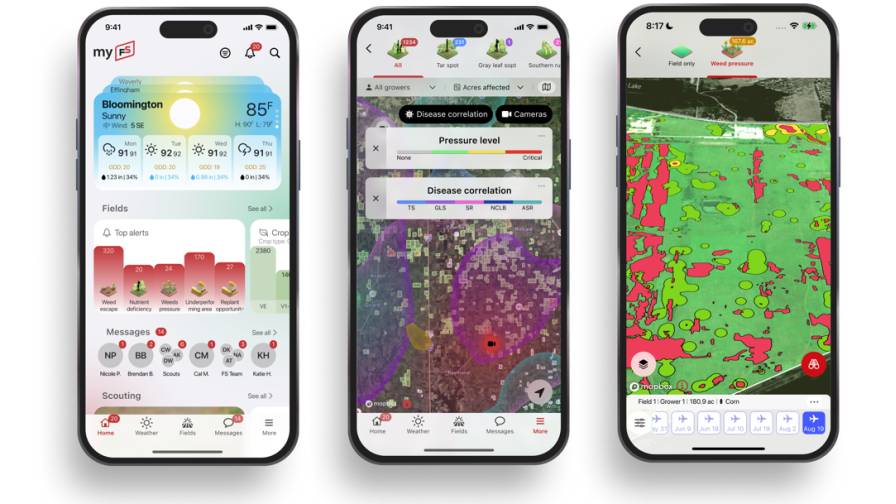Spring Applications Of Sulfur And Zinc Provide Maximum Yield Potential
Planting is just around the corner, and during tough market conditions, farmers are often tempted to slash input costs rather than truly evaluate how return on investment will differentiate their farm in terms of a loss, breakeven or gain. Having the right inputs contributes to a healthy growing season and a healthy ROI.
“Farmers need to look beyond crop nitrogen (N) requirements to address phosphorus (P) and potassium (K) needs of each crop and also pay close attention to nutrients such as sulfur (S) and zinc (Zn),” says Curt Woolfolk, senior agronomist for The Mosaic Co. “The impact balanced crop nutrition can have on early-season plant growth is significant.”
The beginning stages of plant development can directly affect the success of the rest of the growing season. Things like an early row closure and a strong, fast-growing root system can help prevent pests and disease from taking over, not to mention help build a stronger plant for higher yields.
“Many farmers in fall application markets were reluctant to make applications this past season, despite a high-yielding year,” continues Woolfolk. “A high-yielding year means a high-nutrient-removal year. If farmers are expecting close to the same yield as last year or need to move the yield needle to the next level to become profitable, they need to replenish and balance their soil fertility this spring. Again, pay special attention to the secondary macronutrient sulfur and micronutrients like zinc.”
Nutrient uptake of the primary and secondary macronutrients is measured in pounds per acre, while micronutrients are measured in ounces per acre. Although taken up in small amounts, micronutrients play a crucial role in crop development. It is especially important for a micronutrient like Zn to be spread evenly across the field to maximize root interception and uptake. Traditional fertilizer blends containing Zn fall short in achieving uniform nutrient distribution.
Enzyme systems that regulate the early growth stages heavily rely on Zn. Zinc is also vital for crop stress protection and seed and root system development. Zinc does not act alone in creating building blocks for plants — it is also a team player with N, P and K in many plant-development processes.
Sulfur is an important secondary macronutrient that is required both for early growth and development and throughout the entire growing season of the plant. It is part of every living cell and, along with N, important in the formation of proteins. While sulfate sulfur is mobile in the soil, it is immobile within the plant, which means the plant is unable to compensate for low levels of S that may occur late in the season by moving S from older growth to new growth. Therefore, if a steady supply of S is unavailable over the entire season, late-season S deficiencies can significantly impact yield. MicroEssentials provides two forms of S (sulfate sulfur and elemental sulfur) to help ensure early- and late-season crop needs are met.
“Up to 60 percent of yield is dependent on soil fertility, so if growers missed an opportunity in the fall, spring application is an ideal time to build a strong nutritional foundation and make every investment in their field count,” explains Woolfolk. “In a down year, farmers need to be thinking about what their cost per acre will be, not their cost per ton.”
To ensure farmers are applying the right amount of fertilizer, The Mosaic Company recommends soil testing every two years and following the 4R approach (right source, right rate, right time and right place). Soil tests identify nutrient values in the soil and allow a retailer and grower to adjust for the nutritional needs of a cropping system. Since each nutrient has its own characteristics, it’s important to work with a retail agronomist or crop advisor to determine which ones are needed, at what rate and the best way to apply them.
One product recommended for following the 4R principle of nutrient stewardship is MicroEssentials SZ (12-40-0-10-1). Through MicroEssentials’ patented Fusion technology process, nitrogen, phosphorus, sulfur and zinc are fused into each nutritionally balanced granule, creating a single source for balanced crop nutrition. MicroEssentials has proven results to make sure an entire field has the balanced nutrients it needs to get off to the right start.






